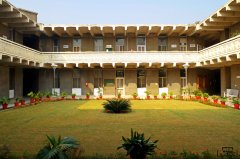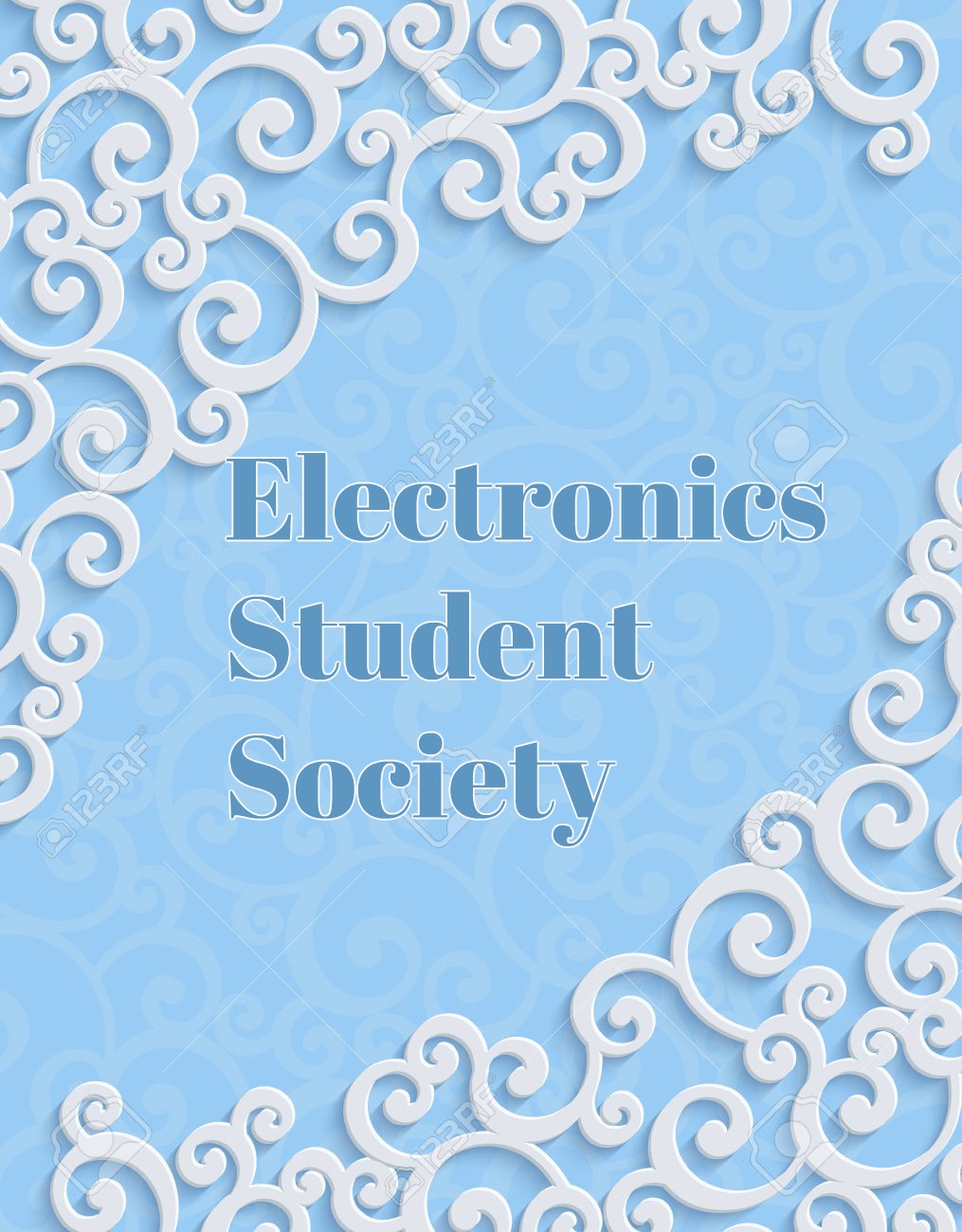Compulsory Courses Outline
|
|
EL-101
|
Engineering Drawing
|
Credits: 2
|
|
Prerequisite: None
Course Outline:
Introduction to engineering drawing, Types of lines and usage, Geometrical construction, Orthographic projection in first and third angles, Projection of points,
Projection of lines, Solids of revolution, Section views, Auxiliary views, Dimensioning, Freehand sketching, Graphical presentation of data, Introduction of computer aided drawing tools.
|
|
Suggested Books:
1. Gary R. Bertoline, Eric N. Wiebe, Nathan W. Hartman, William A. Ross, Fundamentals of Graphics Communication (6th Edition), (McGraw Hill Publishing 2011).
2. Frederick E. Giesecke, Alva E. Mitchell, Henry C. Spencer, Ivan L. Hill, John Thomas Dygdon, James E. Novak, Robert Loving, Engineering Graphics (8th Edition), (Prentice Hall 2003).
|
|
EL-102
|
Introduction to Electronics
|
Credits: 2
|
|
Prerequisite: None
Course Outline:
Introduction to various topics in electronics and allied disciplines at freshman level with knowledge of only high school physics and mathematics. Various applications of electronic circuits, digital logic, computers, automatic control, analog and digital communication systems, electromagnetic waves and systems, image and signal processing, opto-electronics, nano-electronics The lectures will be followed by laboratory demonstrations.
|
|
Suggested Books:
1. Alan Pierce and Dennis Karwatka, Introduction to Technology, (McGraw-Hill 2005).
2. Zimmerman, Introduction to Electronics Devices, (Prentice-Hall 1997).
3. Earl Gates, Introduction to Electronics, (Delmar Cengage Learning 2011).
4. D. N. Klyshko, Physical Foundations of Quantum Electronics, (World Scientific, 2011).
|
|
EL-192
|
Introduction to Electronics Lab
|
Credits: 1
|
|
Sr. No
|
Experiment
|
|
1.
|
Laboratory demonstrations of digital circuits such as logic gates, timers and counters.
Following the demonstration, students will perform simple digital logic experiments using trainer kits. They will perform arithmetic operations by providing different inputs to the hardware and observe final output on different types of output devices. They will also perform simple memory operation, timer and counter experiments using digital trainers.
|
|
2.
|
Laboratory demonstration of Field Programmable Gate Arrays (FPGA) devices. Demonstrates how same hardware circuit can perform different function by reprogramming. Following the demonstration, student will load different gate-map on the target boards to observe multiple function of the same FPGA hardware. They will learn how same hardware can perform simple to complex function without making changes in hardware.
|
|
3.
|
Demonstration of modulation and demodulation process for analog communication systems such as Amplitude Modulation (AM) and Frequency Modulation (FM).
Following the demonstration, students will vary various parameters of analog communication systems such as Signal-to-Noise Ratio (SNR), carrier frequency and bandwidth. They can view the signal bandwidth and quality using spectrum analyzer.
|
|
4.
|
Demonstrations of image processing algorithms such as compression and decompression (MPEG). Tradeoff between image quality and compression using video trainers. Following the demonstration, students will perform the following experiments: Conversion of RGB images to gray scale image and learn the interpretation of intensity values for different gray level areas in images by using image processing toolbox (MATLAB). They will explore the basic digital image filters to view effects of different filtering and image enhancement techniques on digital images. Conduct different arithmetic operations on images and analyze their results. They will also perform basic image transformations, such as translation, rotation and scaling to learn the effect of multiple transformations.
|
|
5.
|
Study the impact of different types of antennas and their geometry on the communication link using antenna trainers. Student can observe the directional gains of antennas and beam-forming by manipulating antenna directions and varying weights of spatial filter.
|
|
6.
|
Demonstration of a digital communication systems using Software Defined Radios (SDR) and demonstration of a base station using SDR. Following the demonstration, students can configure SDR for different modulation methods and observe signal spectrum on the spectrum analyzer. They can also see eye-diagram and constellation of different modulations. Students will set SNR of the link and measure its effect on throughput. In the demonstration of small SDR based GSM mobile phone network, the students will configure the network. In addition, the students will learn the necessary steps to setup a base station and establish a mobile telephone call.
|
|
7.
|
Demonstration of optical self-imaging using diffraction grating, single and double slit experiments, and Mach-Zehnder Interferometer, Michelson interferometer.
Following the demonstration students will perform the experiment and develop their understanding in wave propagation, interference, near field and far field diffraction of waves. It will help in developing basic understanding in optics, electromagnetism and wave propagation.
|
|
|
EL-201
|
Engineering Mathematics-I
|
Credits: 3
|
|
Prerequisite: Calculus and Analytical Geometry II(MA-102)
Course objective:
This course aims learn differential equations, complex variables and transformations. Engineering Mathematics-I builds foundation for core and advances courses.
Course Outlines:
Differential equations: Series solutions of differential equations, special functions, Complex Variables: Functions of complex variables, Complex integration, Complex series, Integration by residues, Fourier series and transforms, Laplace transforms.
|
|
Suggested Books:
1. E. Kreyszig, Advanced Engineering Mathematics, 10th,(John Wiley 2011).
2. J.W. Brown and R.V. Churchill, Complex Variables and Applications, (8th, McGraw-Hill, 2008).
3. M.R. Spiegel, S. Lipschutz, J. Schiller, D. Spellman, Complex Variables, 2nd, (McGraw-Hill 2009
|
|
EL-261
|
Semiconductor Electronics
|
Credits: 3
|
|
Prerequisite: Calculus and Analytical Geometry II ( MA-102)
Course objective:
This course focuses on the foundation and principles of quantum electronics and their applications in engineering semiconductor devices. Examples and problems are designed to address the applications of the course contents to real problems in semiconductor devices.
Course Outlines:
Introduction to quantum electronics, nature of electron, atom, semiconductors, electronic energy bands, lattice vibrations, interaction and dynamics of Bloch electrons in fields, scattering and transport theory, diffusion and drift, equilibrium statistics, optical and transport properties, Semiconductor devices, principle of p-n junction, heterojunctions and transistors, semiconductor lasers and light emitting diodes, applications of hetrostructures.
|
|
Suggested Book:
1. Streetman, B. G., and Banerjee, S. K., Fundamentals Solid State Electronic Devices, Sixth Edition, Prentice-Hall, 2006. ISBN-978-81 -203-3020-7
2. Sze, S. M. Ng, K. K.,Physics of Semiconductor Devices, (3rd. Edition, Wiley, 2007).
3. Pierret, R. F., Semiconductor Device Fundamentals, (2nd Edition, Addison-Wesley, 1996).
4. D. A. Neamen, Semiconductor Physics And Devices, 4th Edition, McGraw Hill, 2003.
5. Amnon Tariv, Quantim Electronics, John Wiley 1989
6. Gennaro Auletta, Mauro Fortunato and Giorgio Parisi, Quantic Mechanics, Cambridge University Press 2009.
|
|
EL-221
|
Digital Logic Design
|
Credits: 3
|
|
Prerequisite: None
Course objective:
To introduce the concepts for the design of digital electronic circuits and systems Digital Logic Design builds foundation for computer architecture, embedded systems and microprocessor based design.
Course Outlines:
Number systems, Boolean algebra, De Morgan’s theorem, Karnaugh map, Quine-McCluskey minimization, logic gates, adders, subtractors, decoders, multiplexers, read only memories (ROM), programmable logic arrays, flip-flops, counters, registers, memory devise, error checking code, logic families, sequential machine, finite state machines.
|
|
Suggested Books:
1. Morris Mano and Michael D. Ciletti, Digital Design: With an Introduction to the Verilog HDL (5th Edition Pearson, 2012).
2. John F. Wakerly, Digital Design: Principles and Practices, (Prentice Hall: Englewood Cliffs, N.J., 4th Edition, 2005)
3. Brian Holdsworth, Clive Woods, Digital Logic Design, 4th Edition, (Elsevier, 2002).
4. J. Tocci, Digital systems, Principles and Applications (Prentice-Hall, 1995).
5. T Floyd, Digital Fundamentals 4th edition (MacMillan publisher 1990)
|
|
EL-291
|
Digital Logic Design Lab
|
Credits: 1
|
|
List of experiments
1. Basic Logic Gates (AND, OR, NOT)
2. Extended logic gates (Ex-OR, Ex-NOR, NAND, NOR)
3. Implementation of Boolean functions using logic gates
4. Adders and subtractors
5. Flip-flops
6. Multiplexers
7. Encoders and decoders
8. Shift registers
9. Counters
10. Arithmetic logic unit
11. Traffic light controller
12. Implementation of Moore and Mealy state machines
13. Project
|
|
EL-211
|
Basic Circuit Theory
|
Credits: 3
|
|
Prerequisite: Engineering Mathematics-I ( EL-212)
Course objective:
Students learn mathematical representation and analysis of resistor, capacitor and inductor based circuits. Basic circuit theory builds foundation for courses on electronics (Electronics-I and Electronics-II).
Course Outline:
Basic Concepts: Voltage, Current, Power and energy, circuit elements, independent and dependent sources, Kirchhoff's laws, node analysis mesh analysis, linearity, superposition, source transformations, Thevenin's Theorem, Norton's Theorem, two port networks, first and second-order circuits Power Analysis: Instantaneous and average power, power factor and power factor correction, complex power, maximum power transfer theorem.
|
|
Suggested Books:
William Hayt, Jack Kemmerly and steven durbin, Engineering Circuit Analysis 8th edition (McGraw-Hill, 2011)
Dorf and Svoboda, Introduction to Electric Circuits, 9th edition (John Wiley, 2013)
C.A Desoer and E.S.Kuh, Basic Circuit Theory (McGraw-Hill, 1969) |
|
EL-292
|
Basic Circuit Theory Lab
|
Credits: 1
|
|
List of experiments
1. Measurement of different resistances using color coding
2. DC voltage and current measurements
3. Resistor characteristics using Ohm’s law
4. Series-parallel resistive network
5. Kirchhoff’s laws
6. Superposition, Theremin’s theorem
7. Norton’s theorems
8. AC voltage characteristics
9. Characteristics of RC circuits
10. Characteristics of RLC circuits
11. Series resonant circuits
12. Parallel resonant circuits
|
EL-281
|
Signals and Systems
|
Credits: 3
|
|
Prerequisite: Engineering Mathematics-I ( EL-212)
Course objective:
The course introduces the basics concepts of linear signals and systems analysis and their tools in the time and frequency domain. Analytical development is the main emphasis of this course. This course also introduces MATLAB programming for signal representation and analysis. Signal and systems builds foundation for digital signal processing, communication systems, image processing and control systems.
Course Outline:
Types of Continuous and discrete time signals, Linear time invariant systems, Differential and difference equations, Fourier series, continuous time and discrete time signals, linear time invariant systems, differential and difference equations, Fourier series, continuous time and discrete time Fourier transformation, laplace transformation, time frequency characterization of signals and systems, sampling theorem for analog to digital conversion.
|
|
Suggested Books:
1. Alan V. Oppenheim, S. Willsky and S. Hamid Nawab, Signals and Systems (Prentice Hall 2nd Ed., 1996)
2. B. P. Lathi, Principle s of Linear Systems and signals (Oxford 2nd Ed., 2010)
|
|
EL-202
|
Probability, Statistics and Random Variables
|
Credits: 3
|
|
Prerequisite: Calculus and Analytical Geometry I ( MA-101)
Course objective:
This course help students learn concepts of probability and random process required for signal processing, communication systems, image processing and network analysis.
Course Outlines:
Probability, Joint and conditional probability, bayes theorem, random variable, distribution and density functions, the Gaussian random variable, expectation, moments, transformation of a random variable, multiple random variables, expectation, Moments, Transformation of a random variable, multiple random variables, statistical estimation and testing, confidence intervals, introduction to linear regression, Random processes, stationarity and independence, correlation and covariance, power spectral density, colored and white noise.
|
|
Suggested Books:
1. A.L. Garcia, Probability, Statistics, and Random Processes for Electrical Engineering, 3rd, Pearson, 2008.
2. S. Lipschutz, Theory and problem of probability, 2nd,( McGraw-Hill, 2011).
|









